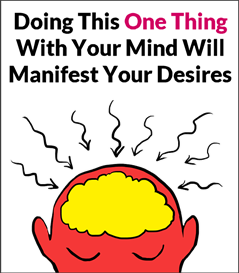 |
How To Exploit Your Brain's Unlimited Power
|
|
|
|
The Brain And Its Functions
|

“The brain is a monstrous, beautiful mess. Its billions of nerve cells-called neurons-lie in a tangled web that displays cognitive
powers far exceeding any of the silicon machines we have built to mimic it.” - William F. Allman
Your brain is the anterior or front part of your central nervous system, and is the primary control center for the peripheral
nervous system. It controls involuntary activities such as the heartbeat, respiration, and digestion. These are also called
autonomic functions and encompass sensation and movement. However, that’s not all of which your brain is capable, of course;
it also controls thought, reasoning, and even abstraction. All of these are known as conscious activities. The human brain
is capable of perception, imagination, memories, and the ability to interpret information.
What makes the human brain truly unique is its ability to make synaptic connections, creating an intricate and extremely
densely connected neural network. Our mental abilities are separated into the cerebral hemispheres, right and left. Some functions,
such as language and speech, are localized in specific areas in only one hemisphere. Your brain is resilient in that if one
hemisphere is injured, at an early age, the functions can be recovered by the other hemisphere, sometimes only in part, sometimes
in full. Both hemispheres can control memory and reasoning, as well as motor control.
Thanks to a process called neurogenesis, new neurons can grow, even in the mature adult brain. That means you can learn and
develop your brain throughout your life.
The neocortex, which helps us in many aspects of our thinking process, contains billions of neurons, arranged in layers on
the brain’s outer surface. There are two halves of the brain, the right and left side, and each half of the brain is divided
into four sections or lobes, and each lobe has a special function or purpose. These lobes are the frontal, parietal, occipital
and temporal lobes.
-
Frontal Lobe: This controls planning and reasoning, as well as activating our muscles.
-
Parietal Lobe: This controls physical sensation, such as heat, cold, pressure or pain.
-
Occipital Lobe: Also called the visual cortex, this processes and interprets sensory information.
-
Temporal Lobe: This controls hearing, speech perception and some kinds of memory. If you’re one of the ninety percent of right-handed
people, or one of the ten percent of left-handed people, the left temporal lobe contains the center for spoken language.
All these functions actually, only take up a small space in each of the lobes, the rest of the space is for putting together
the association of experiences and ideas. Simply put, it’s for thinking. We are able to consider consciously what’s going
on, weigh our options and decide on the best choice for us to make.
The cerebellum is the part of our brain that helps control our posture and balance, even coordination. This is why once you
have learned to ride a bike or drive a car, you never forget how. It requires effort to learn at first; but after that, practice
makes it automatic.
The limbic system cooperates with the brain stem and regulates the body’s temperature, blood pressure, heart rate and blood
sugar. It’s also the center of human emotion. The thalamus is essentially the brain’s relay station. It channels impulses
from all the senses, except smell, to the cerebral cortex and sorts out the important information from the insignificant;
and together with the hippocampus, it plays a role in memory.
The hypothalamus regulates the body’s temperature, as well as hunger and thirst. It also signals the pineal gland concerning
sleep. The pineal gland receives nerve impulses from the eyes and regulates the body’s internal clock and daily circadian
rhythms. When it receives a message from the hypothalamus, it also secretes the hormone melatonin, which has to do with sleep
and wakefulness. The amygdale is what integrates the senses and is essential to forming memories.
Knowing how the brain is set up and how it works will help us learn to protect, enhance and keep those brains in tip-top
shape, honed and sharp, all of our lives.
So, what is your brain’s potential and how can you attain it? Read on.
“If the brain were so simple we could understand it, we would be so simple we couldn’t.” - Lyall Watson
|

